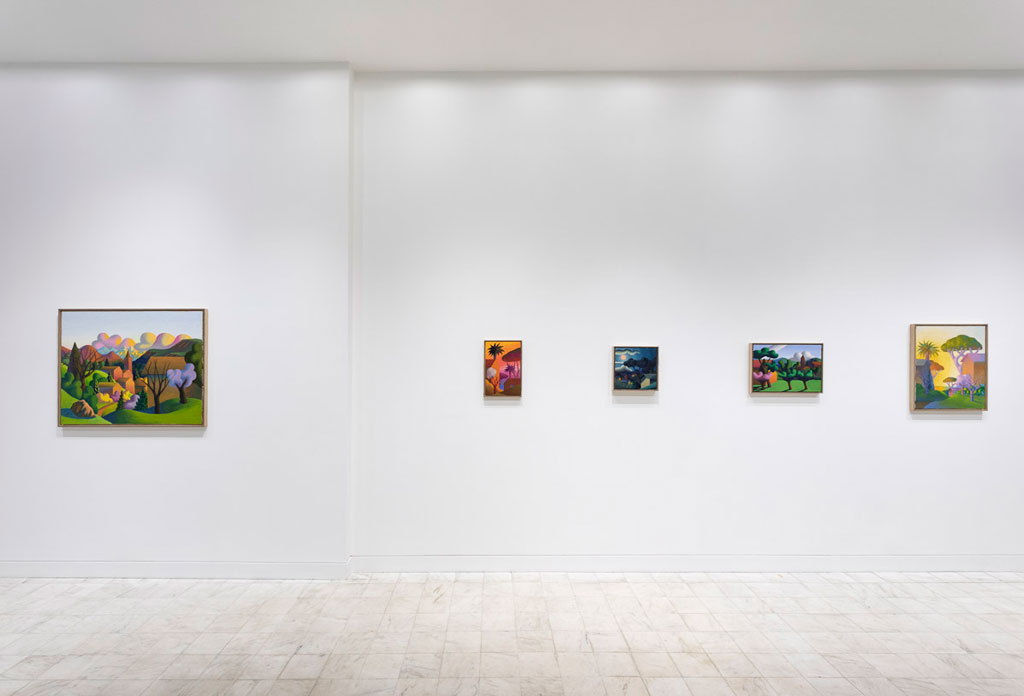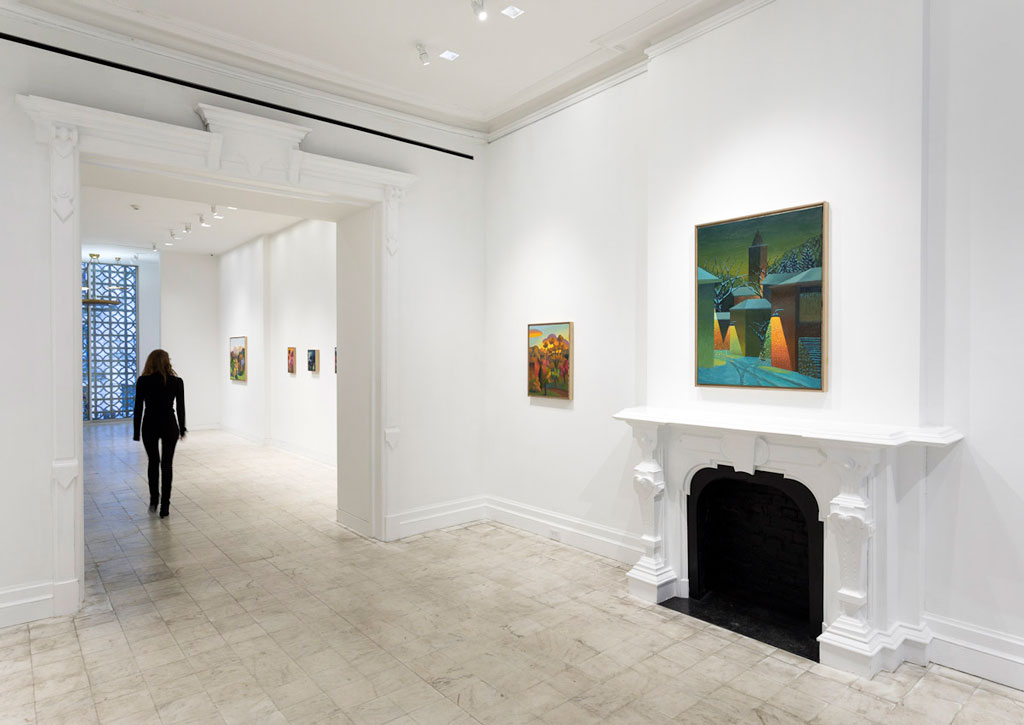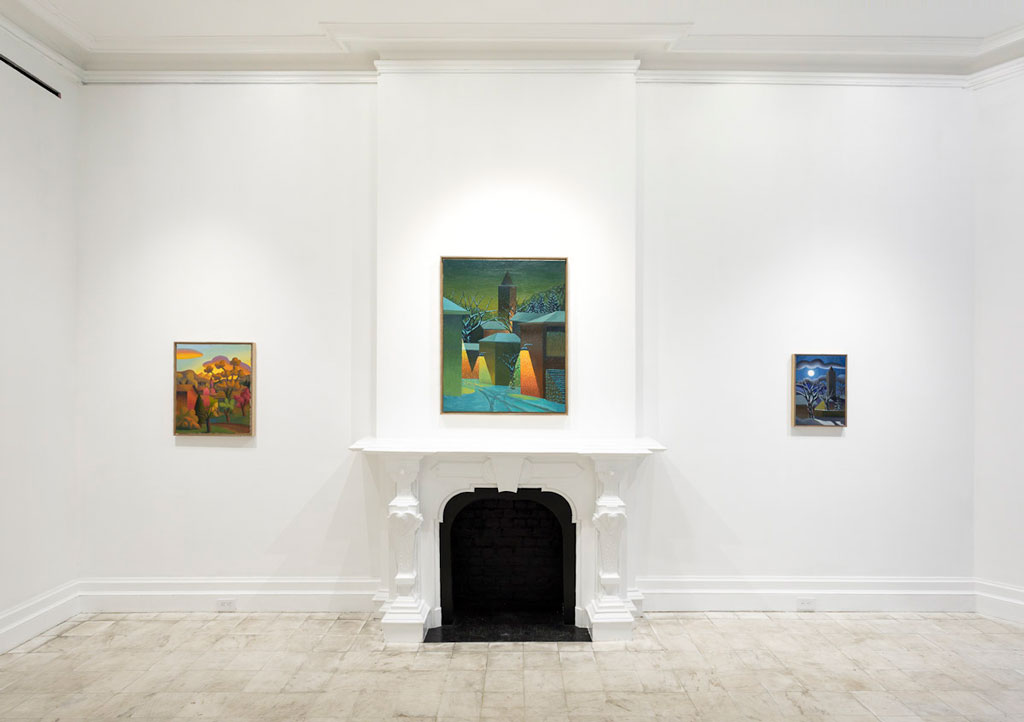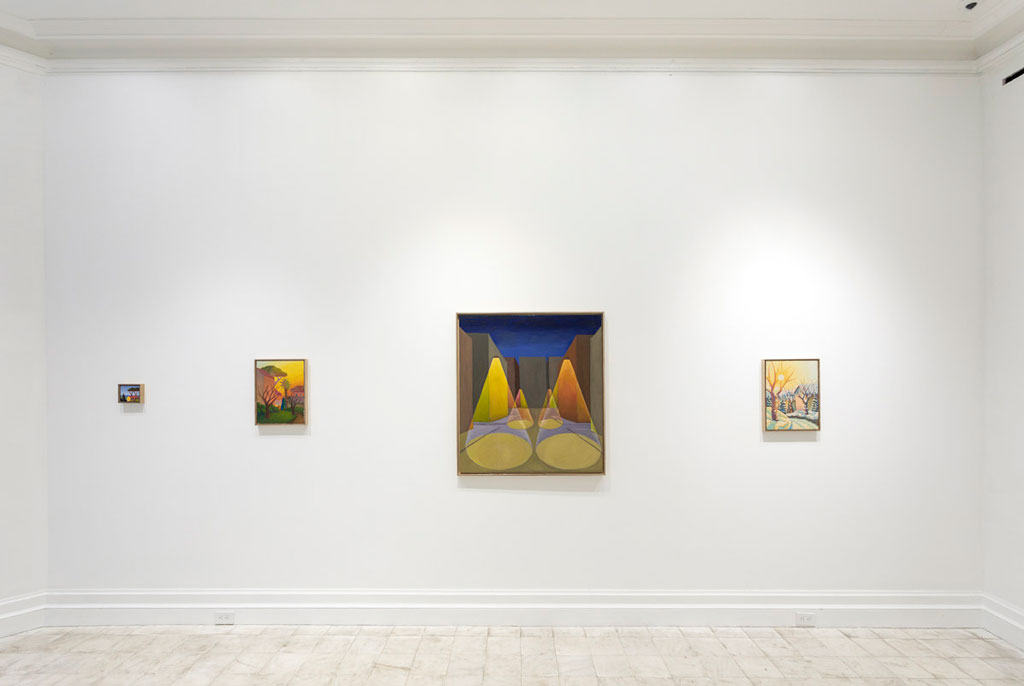ART CITIES:N.York-Salvo
Salvo (Salvatore Mangione) was an Italian artist that transitioned from producing austere sculptures to painting richly colored depictions of the Italian countryside. Originally achieving recognition for his text-based works, which consisted of his name or a tombstone for himself, Salvo began painting in 1973. Characterized by simplified forms reminiscent of the early Modern avant-garde. These dream-like scenes like are reminiscent of the Italian Metaphysical painter Giorgio de Chirico.
By Dimitris Lempesis
Photo: Gladstone Gallery Archive
Focusing on his compositions of landscapes and cities, the exhibition at Gladstone Gallery surveys more than 30 years of Salvo’s artistic practice and highlights his early conceptual art and his astounding aptitude for portraying the complexities of light and the passage of time. The works in this show solidify Salvo’s singular and ever explorative approach to artmaking and his lasting impact on Italian modernism. Salvo (Salvatore Mangione) was born in Leonforte, in the province of Enna in 1947. In 1956 he and his family move from Catania to Turin, which will always remain his adoptive city. In the early 1960s he begins painting and supports himself by selling low-priced portraits, landscapes and copies of Rembrandt and Van Gogh. In 1963 he participates in the 121st Esposizione della Società Promotrice delle Belle Arti with a drawing after Leonardo. Between September and December 1968, the artist is in Paris, swept off his feet by the cultural climate of the student protests. After returning to Turin, he begins spending time with the artists involved in the Arte Povera movement, whose point of reference is the gallery owned by Gian Enzo Sperone. He meets Alighiero Boetti; they become friends and share a studio until 1971. He also meets Mario and Marisa Merz, Jiulio Paolini, Giuseppe Penone, Michelangelo Pistoletto, Gilberto Zorio, as well as the critics Renato Barilli, Germano Celant, and Achille Bonito Oliva. In 1969 he gets involved with the American Conceptual artists Joseph Kosuth, Robert Barry, and Sol LeWitt. In the summer he embarks on his first long journey to Afghanistan, to be followed by others. He begins making works that already clearly show up the themes: the search for the Self, narcissistic self-satisfaction, the relationship with the past and with the history of culture, that will become an essential part of his later research. These include the photograph “Autoritratto come Raffaello” and the “12 autoritratti” series where he mounts his own face on images taken from newspapers, shown at the Sperone Gallery in 1970 for his first solo show. In parallel with his photographic works, Salvo makes marble panels on which he carves words or sentences. Although the works are developed within the context of the Arte Povera movement, their monumental and archaicizing connotations reveal their unique nature and foreshadow the artist’s future research. The following year he makes “40 nomi” a list of illustrious names that go from Aristotle to Salvo. He continues to work on his series of marble plaques throughout 1972, with inscriptions from a variety of sources. In 1971 he begins making “Tricolore”, surfaces on which he writes “Salvo” in red, white, and green or in neon lettering, as well as copies of novels he personally transcribes where he uses the same process of substituting self-portraits by inserting his name in lieu of that of the main character. In June 1972 he meets John Weber, and his last exhibition of Conceptual works is planned to be held in the New York gallery the following January. That same year Salvo takes part in Documenta 5 in Kassel. Salvo makes a crucial decision in 1973 when he goes back to painting, which he will never again abandon. With the intention of revisiting art history Salvo proceeds to make his works known as “d’après”. Citing an old master painting does not necessarily mean copying it tout court, but rather doing it over in a simplified key, where the artist at times adds images of himself according to the process of the self-portrait. The following year “Projekt ’74” opens in Cologne: Salvo asks that his works not be shown at the Kunsthalle, the seat of the exhibition, but in a room at the Wallraf-Richartz-Museum, where “San Martino e il povero” (1973) is placed next to the masterpieces of one painter for each Century. In 1974 Salvo paints his first “Italie” and “Sicilie”. These consist of clearly recognizable geographic maps bearing the names of famous philosophers, painters, writers followed by Salvo’s own name, all of which are neatly marked on the surface. In 1976 there is a change in his research. He develops a series of landscapes in which he uses bright colors to depict horsemen amidst architectural ruins and visions of classica columns, viewed at different times of the day or night. Between late 1979 and 1980 Salvo paints a series of landscapes with country homes, churches, and monuments such as San Giovanni degli Eremiti in Palermo and the Tower of Pisa; appearing for the first time are trees inspired by Giotto and vegetation. In the summer of 1984 Maurizio Calvesi invites Salvo to “Arte allo specchio” at the 41st Venice Biennale: he shows six of his works, including “San Martino e il povero, Il bar”, made in 1981, and a painting from the cycle “Rovine” dated to 1984. Upon returning from a long trip to Greece, Yugoslavia, and Turkey, he paints mishram, the typical Muslim graves he had visited in Sarajevo. This theme, introduced by Franco Toselli, will be followed by Ottomanie (a neologism coined by Salvo), variants of the previous landscapes featuring minarets portrayed to reveal the essentiality of their architecture. In the 1990s Salvo makes several series of paintings devoted to some of the places he has visited, including Oman, Syria, the United Arab Emirates, Tibet, Nepal, Ethiopia, as well as much of Europe, in particular France, Germany, and Norway. From 1995 onwards Salvo begins spending several months a year in the gulf of Policastro and the Po Valley, near Monviso, places that inspire many of his works. In the 2000s other trips inspire the artist’s painting, especially ones to China, Thailand, Egypt, and Iceland. He has several solo shows During these years his painting embraces the subject of the lowlands, and he introduces a new perspective in his landscapes.
Opening Image: Left: Salvo, Primavera, 1988, Oil on canvas, 40 x 30 cm, © Archivio Salvo , Courtesy of Gladstone Gallery-New York and Brussels, Photo: David Regen. Center: Salvo, Notte d’inverno, 1995, Oil on canvas, 100 x 80 cm, © Archivio Salvo, Courtesy of Gladstone Gallery-New York and Brussels, Photo: David Regen. Right: Salvo, Senza titolo, 1988, Oil on canvas, 60 x 50 cm, © Archivio Salvo, Courtesy of Gladstone Gallery-New York and Brussels, Photo: David Regen
Info: Gladstone Gallery, 130 East 64th Street, New York, Duration: 11/1-29/2/20, Days & Hours: Tue-Sat 10:00-18:00, www.gladstonegallery.com





